The value of Rotterdam and its rainwater
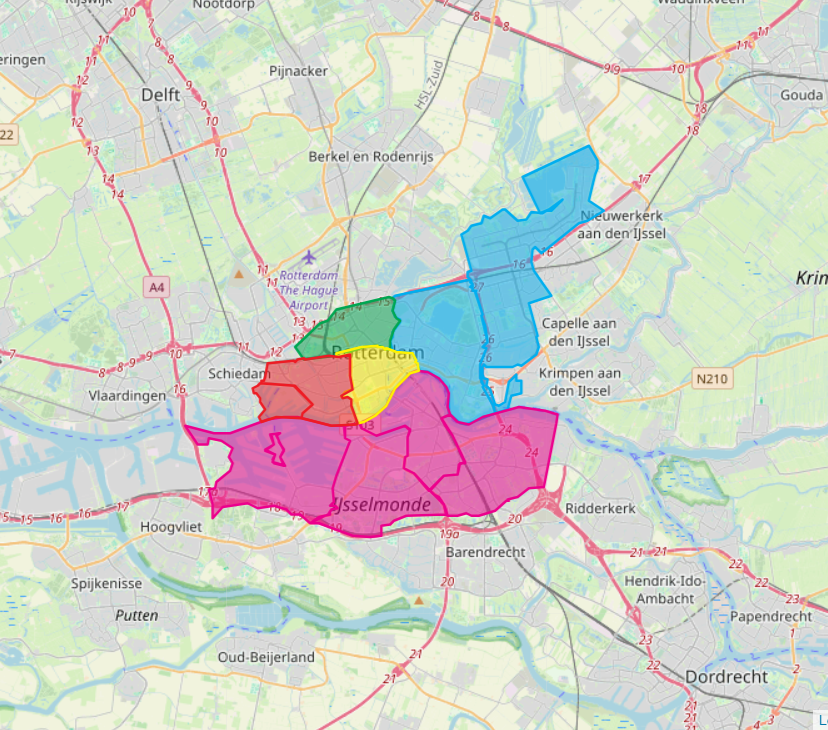
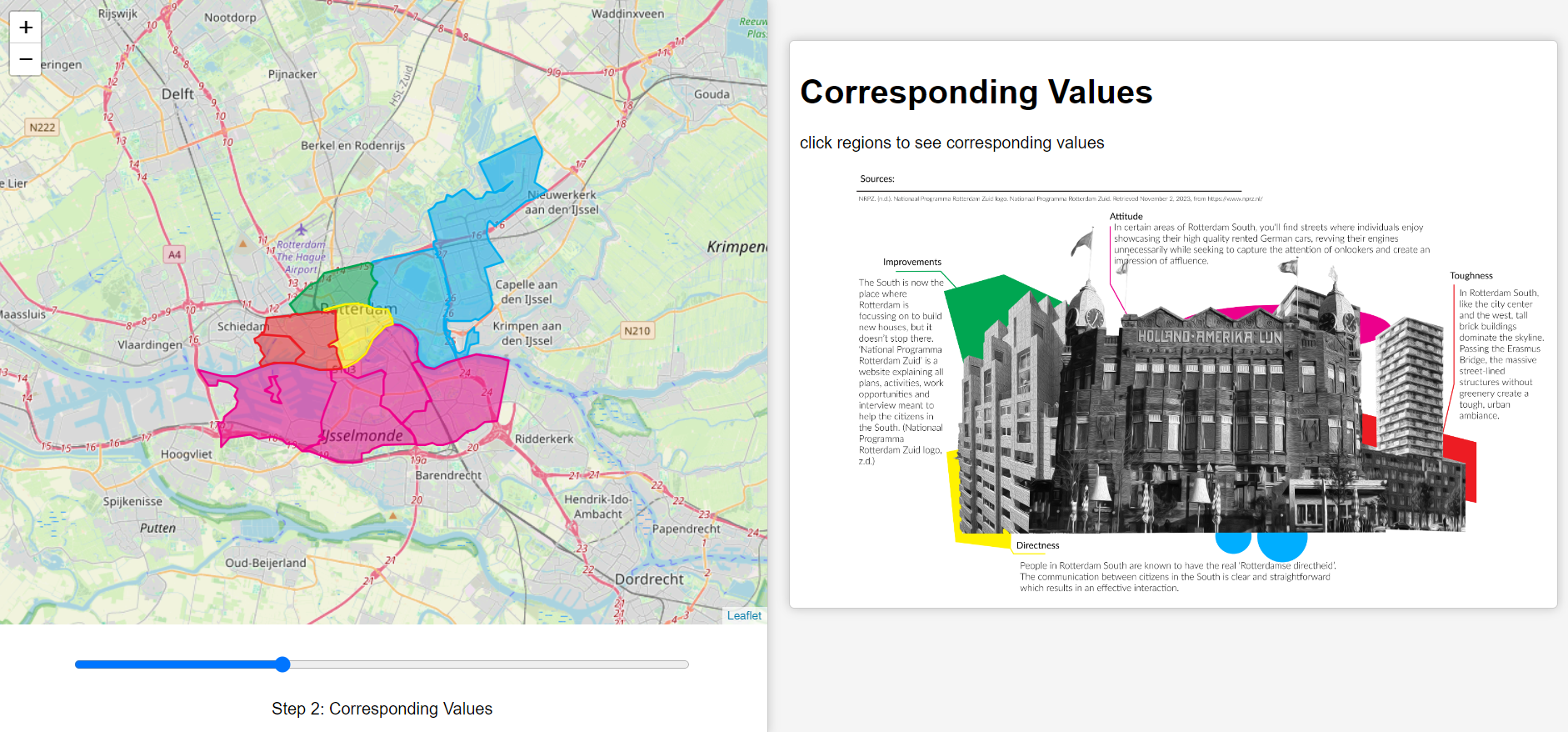
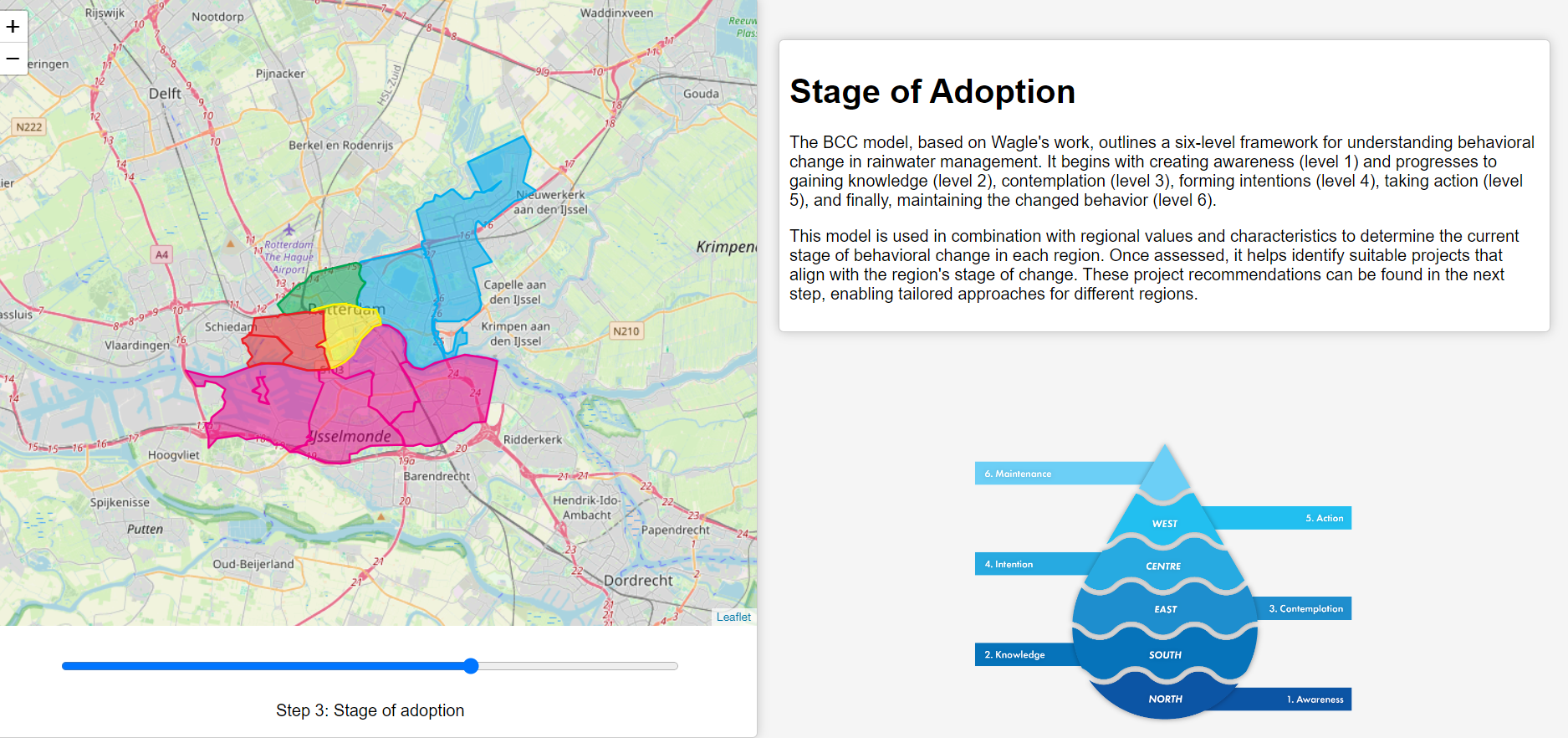
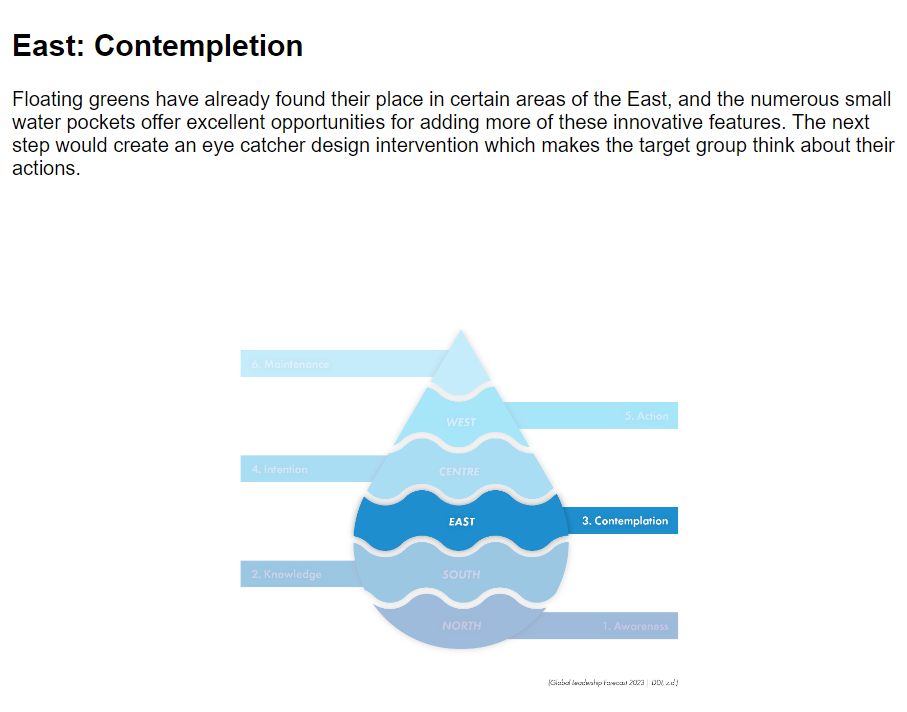
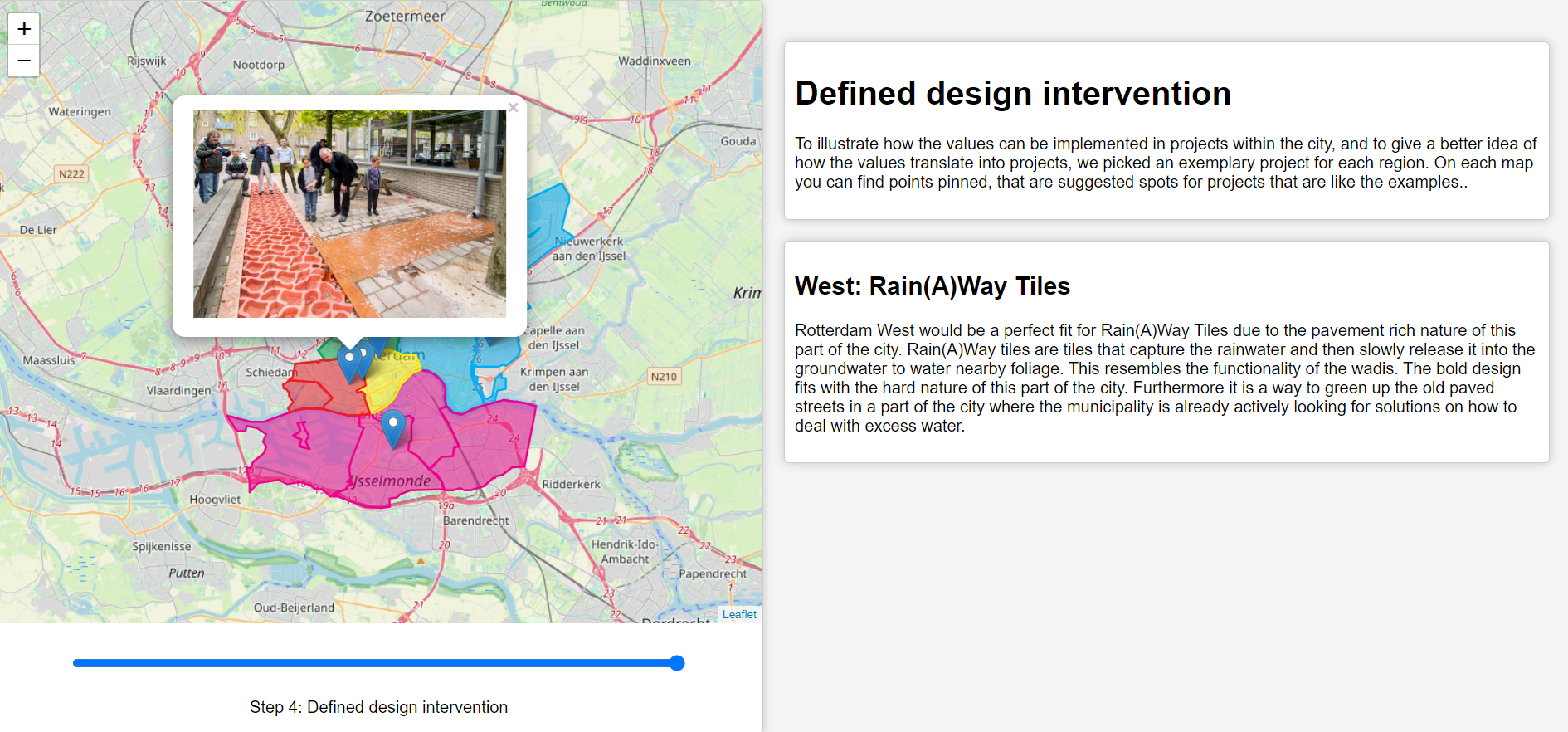
Jos van der Velden, Karel Hamburg and Maarten de Jong elaborated upon the vision of the BoSS consortium for a sustainable, inclusive, and beautiful future in the face of the climate crisis, and have undertaken a comprehensive exploration of Rotterdam, a city known for innovation and diversity. Their process guided by the New European Bauhaus values of beauty, sustainability, and togetherness informed the creation of an actionable value map.
The map divides Rotterdam in five areas, identified by the municipality itself: North (Noord), South (Zuid), central (centrum), West, and East (Oost). The borders of the areas refer to borders defined by the Municipality of Rotterdam (fig.1).
The use of the map follows three steps. The first one is an overall introduction to the city, to the BoSS and to the scope of the map. Then in the second step, by clicking on the specific areas the values and challenges of each one of them are shown (fig. 2).
During the analysis of the city and its initiatives, they particularly focused on the Heliport project in Rotterdam North. Here rainwater is used as a key element for a children's playground to raise awareness on its usage. Therefore, in step three, the map particularly focuses on the relationship between the city, its citizens and the usage of rainwater. In particular, they used the Behavior Change Communication (BCC) model (Wagle, 2019), to develop a six-level framework for understanding behavioral change in rainwater management in each area of Rotterdam (fig.3). In this step of the map, by clicking on each area, it is possible to see in which stage it has been ranked to help identify suitable projects that align with the region's stage of change (fig.4).
Finally, in step four, initiatives related to the usage of rainwater are shown to illustrate how the values can be implemented in projects within the city, and to give a better idea of how the values translate into projects (fig.5).
The Value map provides the reader with some useful insights into the following aspects:
- Values and design possibilities
The value map offers insight into the unique values and characteristics of various regions within Rotterdam, aiding the design of future projects. It serves as a resource for newcomers to the city, enabling them to tailor solutions to the specific culture of each area.
- Regional Diversity
In the map, one specific port city is being discussed, however the values and hence the type of suitable designs for each region of the city differs greatly. The map highlights the significant differences in values and suitable design approaches across Rotterdam's various regions, emphasizing the need to understand local values for project success. While applicable to similar cities, it should be seen as a guideline, not a direct template.
- Inspiration for future projects
The value map showcases existing projects and their contexts, providing examples of how to enhance the relationship between port cities and water. It serves as a source of inspiration for future initiatives focused on sustainability, inclusion, and beauty in coastal areas.
In summary, the exploration and mapping of Rotterdam lay a foundation for informing new initiatives while offering a blueprint for other regions facing similar challenges.
